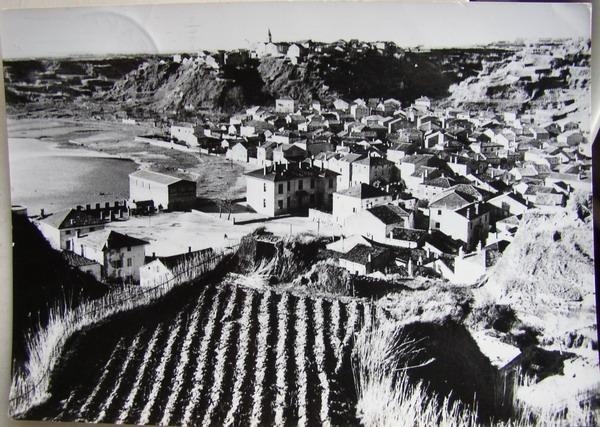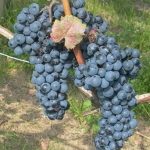
Sansigot (sometimes also called Suščan) is a red grape variety indigenous to Croatia. Well, that’s probably a bit broad, since it is indigenous to the fiftieth larges island in Croatia, island of Susak. Susak is a sandy island, geologically different from all the other Croatian islands, close to Mali Lošinj but still distant and remote. The variety name comes from the Italian name for the island, Sansego, and that name comes from the greek name for oregano – sansegus. The name of the people of the island is also similar, Sansegoti, so the variety is obviously the one that is grown on the island of Susak. Its origin is not fully known, but there are theories that it was brought by the ancient Greeks, and that the sandy soil of a quite northern island was the ideal set of conditions for it to live up to its potential.
In the past grapes and wine were the most important agricultural products on the island, as records show that 280 hectares of the total 350 hectares on the island were vineyards. And almost half of that area was planted with Sansigot. Because of the high yield and quite low susceptibility to various diseases, the variety has spread on the other islands on Kvarner, specifically Krk, Cres and Lošinj, and was traditionally used blended with other local varieties. It manages to acquire acceptable levels of sugar (on good years the sugars can get really high, when there’s not much rain), and matching good levels of overall acidity. Varietal wines are not too strong, have wonderful colour, not too high tannins and can be enjoyed either as a young wine or after some aging.
However, Sansigot grape fell victim to the massive exodus of inhabitants after the World War II: in 1948 the island had over 1500 inhabitants, and in 1991 the figure is staggering 188! Most of the inhabitants have moved to the United Stated, and the remaining people weren’t growing vines or making wines, and unfortunately, to this day, winemaking on Susak has not recovered. To this day, no winemaker is bottling any Sansigot grown on Susak – maybe you’ll be able to find it if you visit the island and ask the local, but other than that, your only chance of getting any Sansigot is if you settle for the grapes grown on Krk. Winemaker Katunar grows Sansigot near Baška, on the soil that is just sandy enough, and the wine is light, fruity, herbal with just enough acidity. Šipun winery grows it on the other side of Krk Island, near Vrbnik, so his is even lighter, elegant and reminiscent of a young pinot noir.
Hopefully in the future more winemakers will decide to grow the grape and the quantity and quality of wine will thus increase. It’s worth the effort to preserve the wine variety that is so uniquely local to one small island, and give it new appreciation.









